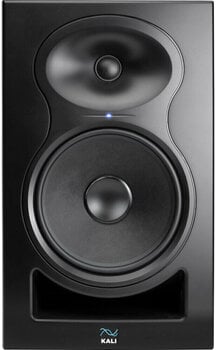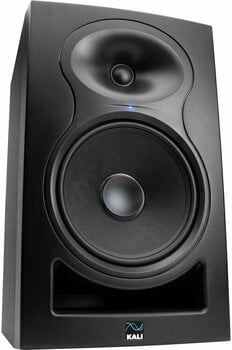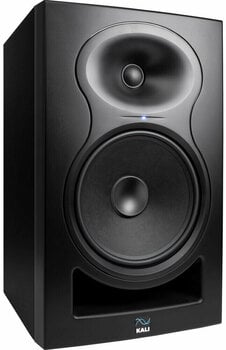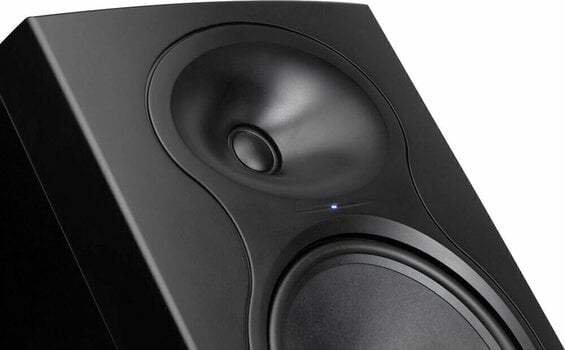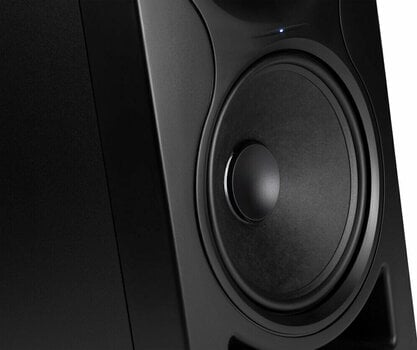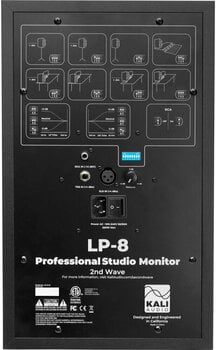Vælg leveringsland
-
Alle kategorier
19
Alle kategorier
-
Guitarer
 Guitarer
Guitarer- Vis alt
- Elektriske guitarer
- Akustiske guitarer
- Klassiske guitarer
- Elektroakustiske guitarer
- Guitarer til børn
- Guitarer til begyndere
- Elektriske guitarer til begyndere
- Venstrehåndede guitarer
- Ukuleler
- Bluegrass-instrumenter
- Guitar-komboer
- Guitarforstærkere
- Guitarkabinetter
- Guitar-effekter
- Guitarer Strenge
- Guitarkasser og tasker
- Tunere
- Pickupper til guitar
- Reservedele til guitarer
- Guitarremme
- Guitar tilbehør
-
Basser

-
Keyboards

-
Trommer

-
Mikrofoner
 Mikrofoner
Mikrofoner- Vis alt
- Dynamiske mikrofoner
- Kondensator mikrofoner
- USB-mikrofoner
- Podcast-mikrofoner
- Retro-mikrofoner
- Båndmikrofoner
- Kondensator mikrofoner med lille membran
- Trommemikrofoner
- Mikrofonsæt til trommer
- Konferencemikrofoner
- Mikrofoner til journalister
- Video mikrofoner
- PC mikrofoner
- Måling af mikrofoner
- Installationsmikrofoner
- Grænseflade mikrofoner
- Stereomikrofoner
- Tilbehør til mikrofoner
-
Studio

-
PA

-
Belysning
 Belysning
Belysning- Vis alt
- Belysningssæt
- Moving Heads
- PAR-lys
- Lyseffekter
- Effektmaskiner og tilbehør
- Lasere
- LED-lysbjælker
- LED-paneler
- Stroboskop
- Blændere
- UV-teknik
- Teaterlys
- Dekorativ belysning
- Studielys
- Lysstyringer og lysdæmpere
- Stativer til belysning
- Kufferter og tasker til lysudstyr
- Belysningskabler
- Lyskilder
- Tilbehør til belysning
- Ringlys
-
DJ

-
Tilbehør

-
Traditionel
 Traditionel
Traditionel -
Strenge
 Strenge
Strenge- Vis alt
- Violiner
- Violaer
- Celloer
- Kontrabasser
- Elektriske violiner
- Elektriske violaer
- Elektriske celloer
- Elektriske kontrabasser
- Tilbehør til violiner
- Tilbehør til bratscher
- Tilbehør til celloer
- Tilbehør til kontrabas
- Tasker og etuier til buer
- Pickupper til strengeinstrumenter
- Finjustering
- Reservedele og andet tilbehør
-
Blæseinstrumenter
 Blæseinstrumenter
Blæseinstrumenter- Vis alt
- Optagere
- Tværfløjter
- Saxofoner
- Trompeter, kornetter og flygelhorn
- Klarinetter
- Tromboner
- Tubaer og sousafoner
- Euphonia
- Horn
- Fagotter
- Oboer
- Tenor- og barytonhorn
- Jagthorn
- Vindsynthesizere
- Andre blæseinstrumenter
- Mundharmonikaer
- Effektfløjter
- Kulturelle fløjter
- Panfløjter
- Ocarina
- Kazoos
- Tilbehør til blæseinstrumenter
-
Foto og video

-
Hi-Fi

-
Pladespillere

-
Hovedtelefoner
 Hovedtelefoner
Hovedtelefoner- Vis alt
- Hovedtelefoner - alle typer
- Trådløse og Bluetooth-hovedtelefoner
- Trådløse on-ear hovedtelefoner
- Hovedtelefoner ind i ørerne
- ørekrog hovedtelefoner
- Hovedtelefoner med mikrofon
- Støjreducerende hovedtelefoner
- Bone Conduction-hovedtelefoner
- Headsets til pc-spil
- Hovedtelefoner til børn
- Hovedtelefoner til hørehæmmede
- Headsets til kontoret
- Høreværn
- Tilbehør til hovedtelefoner
-
Audio
 Audio
Audio -
Merchandise

-
-
Guitarer
Guitarer
- Vis alt
-
Tilbud på guitarer
-
Elektriske guitarerElektriske guitarer
- Vis alt
- Tilbud på elektriske guitarer
- Elektriske guitarer - alle former
- ST-modeller
- T-modeller
- Singlecut-modeller
- Super ST-modeller
- Hard & Heavy
- Doublecut
- Semiakustiske guitarer
- Jaguar
- Jazzmaster
- Mustang
- Utraditionelle former
- 7-strengede guitarer
- 8-strengede guitarer
- Hovedløse guitarer
- Multiskala-guitarer
- Modellering, MIDI og USB-guitarer
-
Akustiske guitarerAkustiske guitarer
-
Klassiske guitarer
-
Elektroakustiske guitarer
-
Guitarer til børn
-
Guitarer til begyndere
-
Elektriske guitarer til begyndere
-
Venstrehåndede guitarer
-
Ukuleler
-
Bluegrass-instrumenterBluegrass-instrumenter
-
Guitar-komboer
-
GuitarforstærkereGuitarforstærkere
- Vis alt
- Modellering af forstærker
- Solid-State guitarforstærker hoveder
- Guitar forstærkerhoveder med rør
- Hybride guitar forstærkerhoveder
- Guitarforforstærkere og rackforstærkere
- Guitar-hovedtelefon forstærkere
- Fodkontakter og controllere
- Vakuumrør til rørforstærkere
- Støvhætter til guitarforstærkere
- Dæmpere og læssekasser
-
Guitarkabinetter
-
Guitar-effekterGuitar-effekter
- Vis alt
- Multieffekter til guitarer
- Overdrives / Distortions / Fuzzes / Boosters
- Delays / Reverbs
- Loopere / samplere
- Wah-Wah-pedaler
- Kor / Flangere / Fasere
- Harmonizer / Pitch Shifter / Octaver
- Kompressorer / sustainere
- Guitar-synthesizer
- Volume-pedaler
- Støjporte/støjdæmpere
- Tremolos / Vibratos
- Equalizere
- Diverse pedaler
- Stomp / trommebokse
- Pedalboards og tasker til effekter
- Buffer Bay
- Effekter til akustiske guitarer
- Guitareffekter - alle typer
- Tilbehør til guitareffekter
- Strømforsyninger til effekter
-
Guitarer Strenge
-
Guitarkasser og taskerGuitarkasser og tasker
- Vis alt
- Gigbags til elektriske guitarer
- Gigbags til akustiske guitarer
- Gig Bags til klassiske guitarer
- Gigbags til Ukulele
- Gigbags for Banjo
- Gigbags til mandolin
- Etuier til elektriske guitarer
- Etuier til akustiske guitarer
- Etuier til klassiske guitarer
- Etuier til Ukulele
- Etuier til banjo
- Etuier til mandolin
-
Tunere
-
Pickupper til guitar
-
Reservedele til guitarer
-
Guitarremme
-
Guitar tilbehør
-
Basser
Basser
- Vis alt
-
Tilbud på basguitarer
-
Elektriske basguitar
-
Akustiske basser
-
Bashoveder
-
Højttaler kabinetter til basHøjttaler kabinetter til bas
-
Bass Combos
-
Bas-effekter
-
Strenge til basguitar
-
Etuier og tasker til basguitarEtuier og tasker til basguitar
-
Pickupper til basser
-
Reservedele til basserReservedele til basser
-
Keyboards
Keyboards
- Vis alt
-
Keyboards tilbud
-
Digitale klavererDigitale klaverer
-
Digitale flygler
-
Tastaturer
-
Klaverer til scenenKlaverer til scenen
-
Synthesizere og arbejdsstationerSynthesizere og arbejdsstationer
-
MIDI Master Keyboards
-
MIDI-controllere
-
Klaverer
-
Flygler
-
Harmonikaer
-
Melodikaer
-
Elektriske orglerElektriske orgler
-
Keyboard-forstærkere
-
Tilbehør til keyboards
-
Trommer
Trommer
- Vis alt
-
Tilbud Trommer
-
Akustiske trommerAkustiske trommer
-
Elektroniske trommer
-
Tromme-hardwareTromme-hardware
-
PercussionPercussion
- Vis alt
- Congas
- Bongos
- Djembes
- Cajons
- Darbukas
- Kalimbas
- Håndpander / tromler med ståltunge
- Meditation og musikterapi
- Tunge-trommer
- Doumbeks
- Ibo Drums
- Samba Instrumenter
- Timbales
- Rituelle instrumenter
- Percussion for børn og Percussionsæt
- Xylofoner, metallofoner og klokkespil
- Håndtrommer
- Tamburiner
- Sleigh Bells
- Klokkespil
- Triangle
- Ko-klokker
- Agogos
- Klodser
- Claves
- Finger Cymbal
- Shakers
- Maracas
- Cabasas
- Caxixis
- Ganzas (musikinstrument)
- Guiros
- Vibraslaps
- Kastagnetter
- Didgeridoo
- Regnpind
- Jødeharpe
- Andet Percussion
-
Pinde og pensler
-
Trommeskind
-
Cymbals
-
Tilbehør til trommerTilbehør til trommer
- Vis alt
- Tasker og etuier til trommer
- Tasker og etuier til Percussion
- Cymbal tilbehør
- Træningspuder
- Stemme keyboards til trommer
- Tromme stemmere
- Tromme-tæpper
- Forstærkningsringe
- Hovedtelefoner til trommeslagere
- Handsker til trommeslagere
- Diverse. Tilbehør til trommer
- Trommestik holdere
- Rengøring til trommer
-
Trommer til orkester
-
Marcherende og jublende trommer
-
Reservedele til tromme-hardware
-
Studio
Studio
- Vis alt
-
Tilbud Studio
-
Audio-grænseflader
-
Studiemikrofoner
-
Akustiske elementer i studietAkustiske elementer i studiet
-
Studio monitorer
-
Studio-hovedtelefoner
-
Digitale optagere
-
DAW-controllere
-
Studio SoftwareStudio Software
-
Studio-tilbehør
-
Forstærkere til hovedtelefoner
-
Studio Møbler
-
PC-holdere og -stativer
-
Digitale lydkonvertere
-
PA
PA
- Vis alt
-
Tilbud på live-lyd
-
Mixerpulte
-
Højttalere
-
Effektforstærkere
-
Trådløse systemerTrådløse systemer
- Vis alt
- Trådløse håndholdte mikrofoner
- Trådløse headset-systemer
- Lavalier trådløse systemer
- Trådløse Systemer-Combi
- Trådløse systemer til guitar og bas
- Instrumentale trådløse systemer
- Trådløse systemer-PA
- Enkeltkomponenter til Trådløst system
- Trådløse rundvisningssystemer
- Intercom-systemer
- Trådløse systemer til XLR-mikrofoner
-
Effekter og signalprocessorer
-
Installationsudstyr
-
In-Ear-overvågningIn-Ear-overvågning
-
Megafoner
-
Gigbags, covers og tilbehør til PA
-
Audio og video
Audio og video
- Vis alt
-
Audio, video, tekniske tilbud
-
Foto og video
-
Hi-Fi
-
Pladespillere
-
HovedtelefonerHovedtelefoner
- Vis alt
- Tilbud på hovedtelefoner
- Hovedtelefoner - alle typer
- Trådløse og Bluetooth-hovedtelefoner
- Trådløse on-ear hovedtelefoner
- Hovedtelefoner ind i ørerne
- ørekrog hovedtelefoner
- Hovedtelefoner med mikrofon
- Støjreducerende hovedtelefoner
- Bone Conduction-hovedtelefoner
- Headsets til pc-spil
- Hovedtelefoner til børn
- Hovedtelefoner til hørehæmmede
- Headsets til kontoret
- Høreværn
- Tilbehør til hovedtelefoner
-
YouTube & Podcast & StreamYouTube & Podcast & Stream
-
Audio
-
3D-print
-
Batterier
-
Merchandise
-
Optik
-
Smart
-
Tilbehør til mobiltelefoner
-
LagringsmedierLagringsmedier
-
Spiltilbehør






